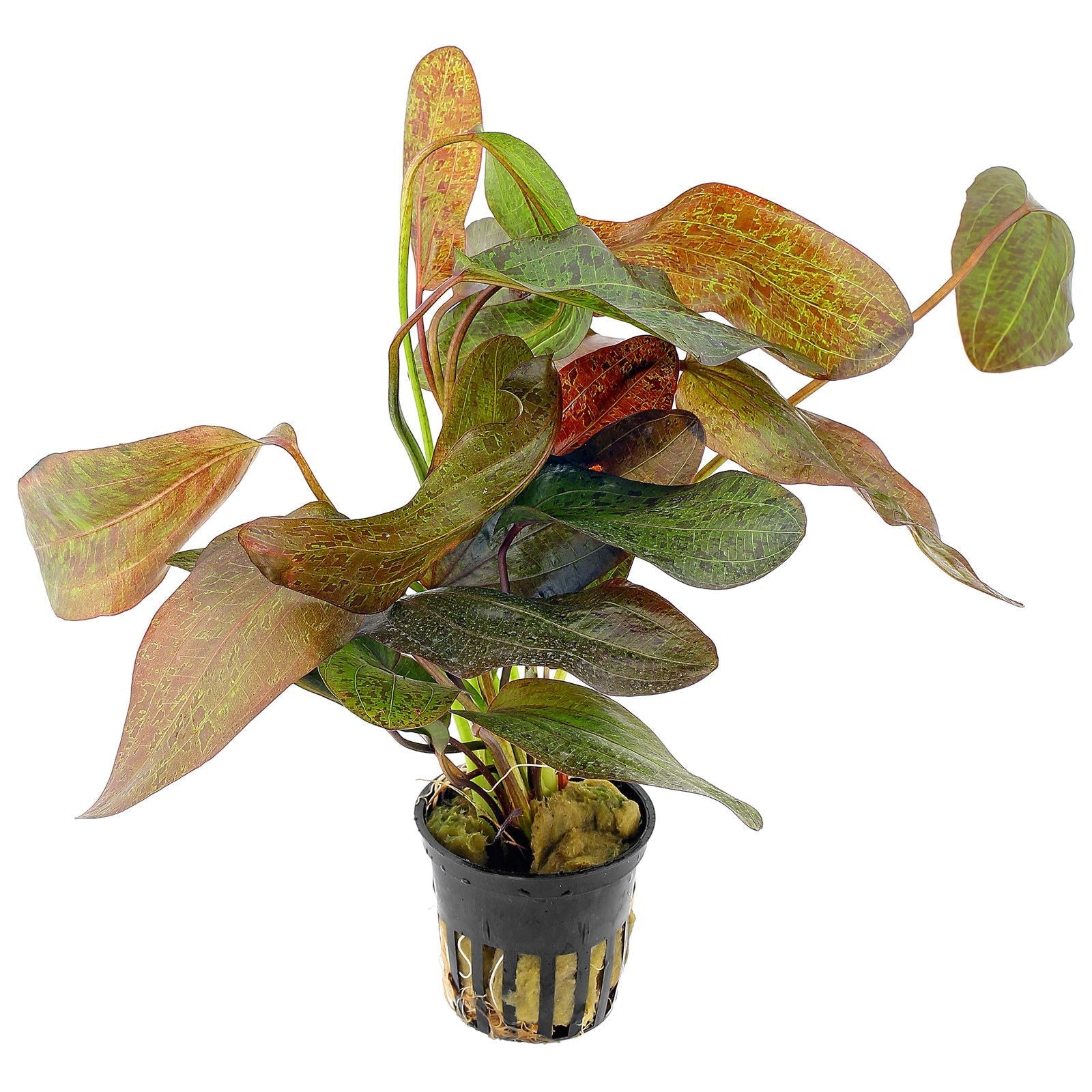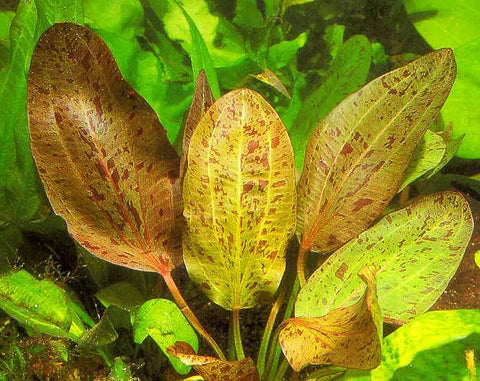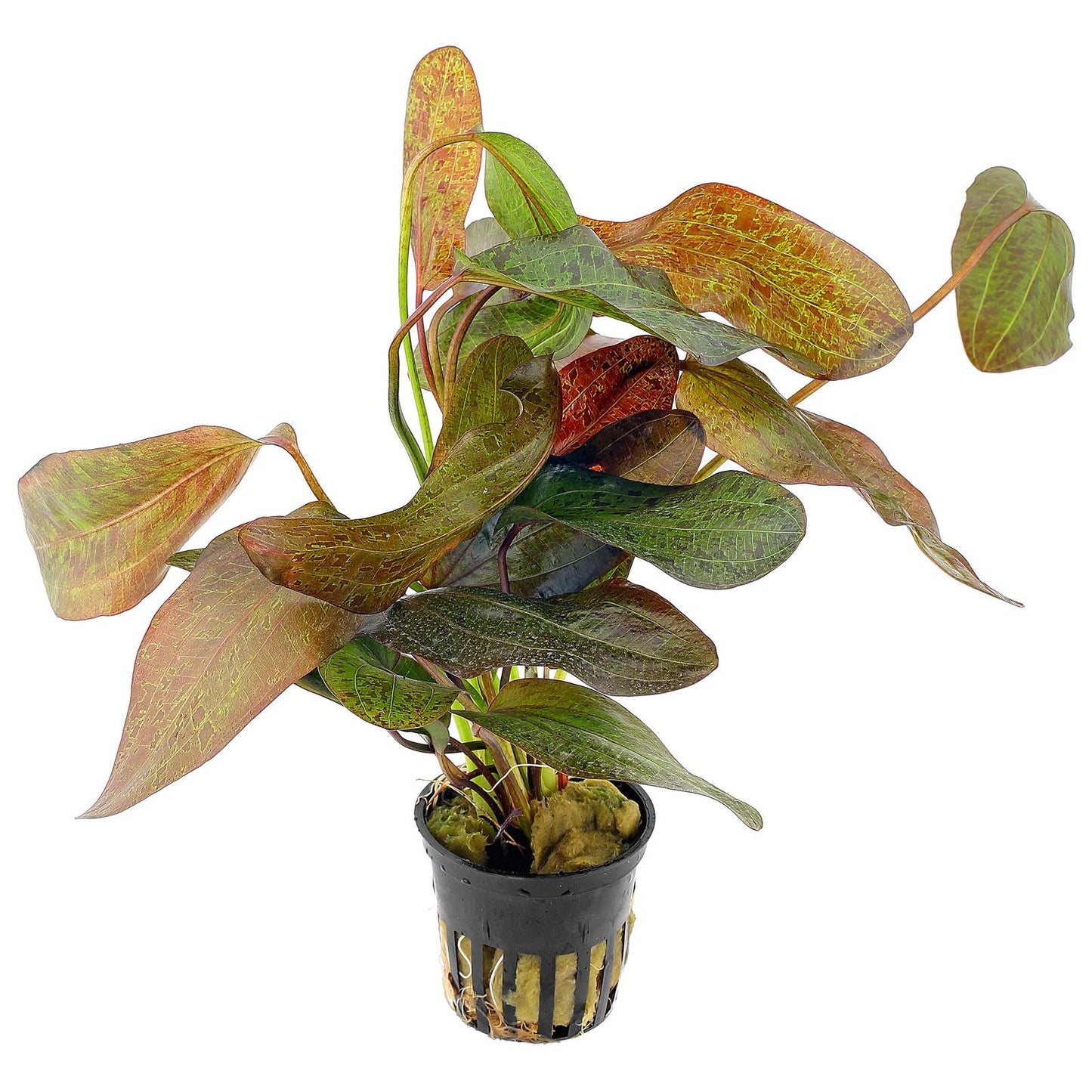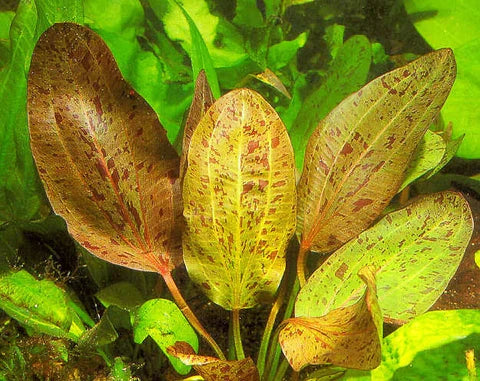🌿 Echinodorus Ozelot Red - Vibrant Freshwater Aquarium Plant
Introduce bold colors to your aquascape with the stunning Echinodorus Ozelot Red. Featuring rich red hues with dark spotted patterns, this plant is a showstopper in any freshwater aquarium. Hardy and low-maintenance, it’s an excellent choice for both beginners and experienced aquarists.
Echinodorus Ozelot Red Quick Facts
| Feature | Details |
|---|---|
| 🌍 Origin | South America |
| 📏 Size | 10 - 20 inches |
| 💡 Lighting | Moderate to high |
| 🌡️ Temperature | 72°F - 82°F (22°C - 28°C) |
| 💧 pH Range | 6.5 - 7.5 |
| 🎨 Color | Deep red leaves with dark spots |
| 🪴 Position in Tank | Midground to Background |
| 🌟 Difficulty | Beginner-friendly (easy to moderate) |
| 🐟 Compatibility | Betta fish, Neocaridina/Caridina shrimp, snails, community fish |
Why Choose Echinodorus Ozelot Red?
- ✔️ Rich red coloration – Stands out beautifully in any aquascape.
- ✔️ Unique spotted patterns – Dark speckles give the leaves a dramatic look.
- ✔️ Great for oxygenation – Improves water quality by absorbing excess nutrients.
- ✔️ Provides shelter – Ideal for fish and shrimp seeking natural hiding spots.
- ✔️ Hardy and adaptable – Thrives in various freshwater setups.
How to Care for Echinodorus Ozelot Red
Care Tips
- Lighting: Moderate to high lighting enhances its red coloration and spot patterns.
- Placement: Works best as a midground or background plant due to its large leaves.
- Substrate: Prefers nutrient-rich substrate; root tabs can promote vigorous growth.
- Fertilizer: Regular root fertilization and occasional liquid fertilizer improve leaf vibrancy.
- Maintenance: Trim older or damaged leaves at the base to encourage fresh growth.
Propagation Steps
- Wait for Runners: Mature plants produce side shoots or runners.
- Separate the Baby Plants: Once plantlets develop roots, carefully detach them from the parent plant.
- Replant: Place the new plantlets into the substrate and allow them to grow.



